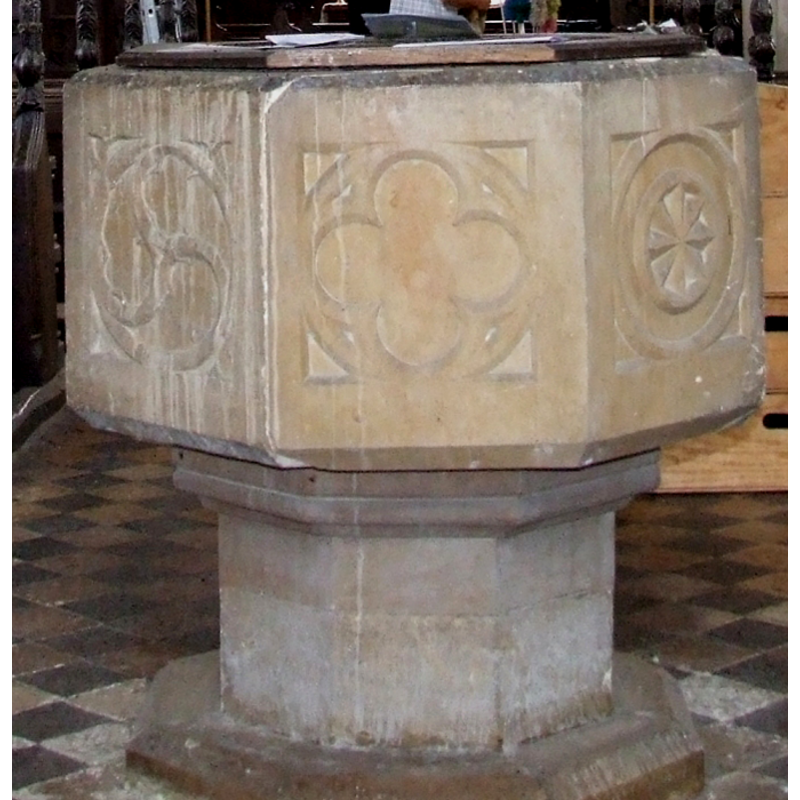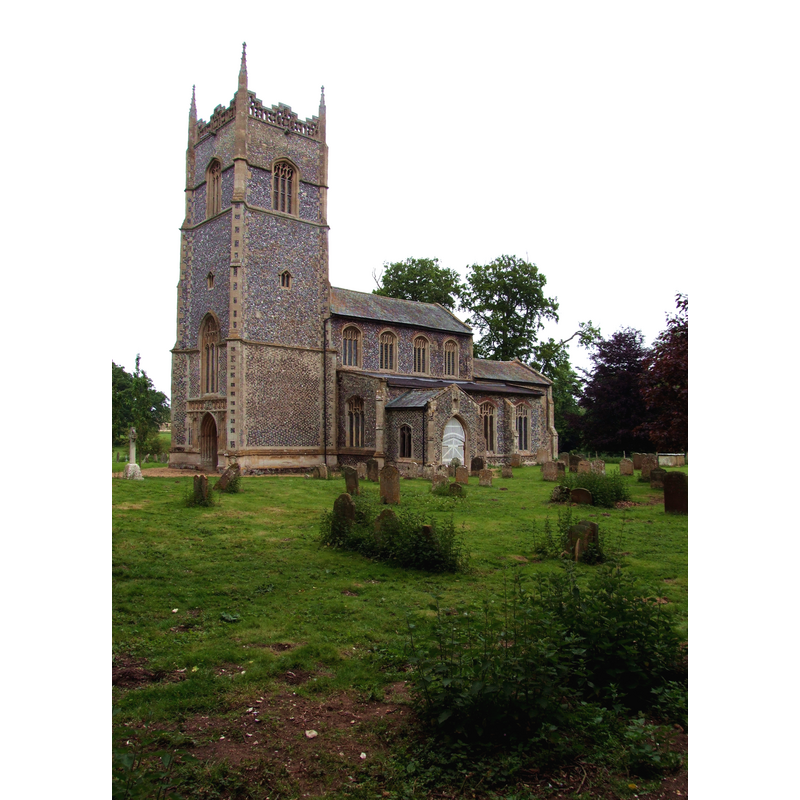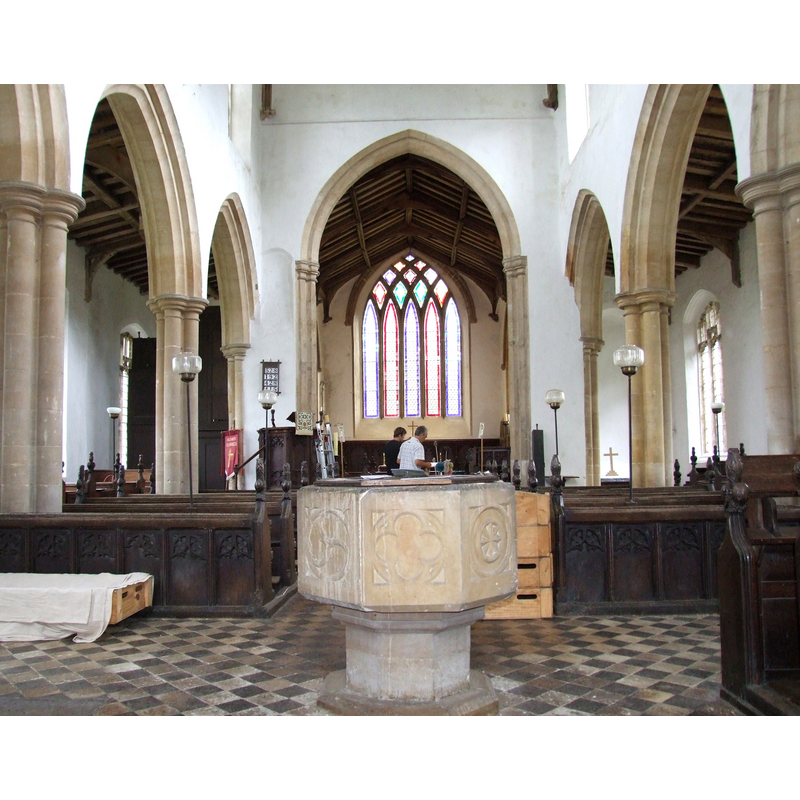Hilborough / Hilburgh / Hildeburghworth / Hildeburhwella

Image copyright © Simon Knott, 2008
Standing permission
Results: 3 records
design element - motifs - tracery - 8
view of church exterior - northwest view
view of church interior - nave - looking east
Scene Description: the font and cover in the foreground
Copyright Statement: Image copyright © Simon Knott, 2008
Image Source: digital photograph taken 10 August 2008 by Simon Knott [http://www.norfolkchurches.co.uk/hilborough/hilborough.htm] [accessed 6 August 2009]
Copyright Instructions: Standing permission
INFORMATION
FontID: 12782HIL
Object Type: Baptismal Font1
Church/Chapel: Parish Church of All Saints
Church Patron Saints: All Saints
Church Location: Hilborough, Norfolk IP26 5BU
Country Name: England
Location: Norfolk, East Anglia
Directions to Site: Located 9 km S of Swaffham
Ecclesiastic Region: Diocese of Norwich
Historical Region: Hundred of South Greenhoe
Font Location in Church: Inside the church, at the W end of the nave
Century and Period: 14th century (early?), Decorated
Cognate Fonts: [cf. FontNotes]
Credit and Acknowledgements: We are grateful to Simon Knott, of Norfolk Churches [www.norfolkchurches.co.uk], for his photographs of church and font
Font Notes:
Click to view
Blomefield (1805-1810) writes: "The church, is a small but regular building, dedicated to all the Saints, having its nave, north and south isles, and chancel built of flint, &c. and covered with lead: the nave is in length about 42 feet, and the breadth with the isles 41 feet; the roof of the nave is supported by pillars forming 6 arches, 3 on a side, with windows over each arch. [...] At the east end of the south isle, which is longer than the nave by 9 feet, is an ascent, where was an altar [...] This porch is a neat one of flint, covered with lead; about the water table is the letter M and swords with their points erected and crowns over them, as in Cressingham-Magna, this isle being probably dedicated to St. Michael. [...] The chancel is divided from the nave by an old screen; it is in length about 30 feet, and in breadth about 18, and there is an ascent of two steps to the communion table. [...] at the west end of the nave stands a neat strong four-square tower of flint, with quoins of free stone and embattlements, and four carved pinnacles, in which hang five modern bells." Blomefield (ibid.) names "Thomas de Kaylli" as first recorded rector, but without a date, the next one being "Michael de Cayly", in 1315. Although the church is not mentioned in the Domesday entry for 'Hildeburhwella' (fol. 96), this author notes: "Soon after the survey [i.e., Domesday, 1086] the Kaillys or Caleys [...] held this lordship of the Earl Warren", and, as indicated above, two of the family held the rectory by presentation of the lord of the manor, also of the family, so the church is likely to have been founded not long after. Tyrrell-Green (1928) notes a group of fonts in which "the geometrical or curved tracery occurs, not exactly in the same form as in the windows of the style, but adapted so as to fill square panels upon the sides of an octagonal font. The fashion is most common in Norfolk, in which county there are proportionately a greater number of fonts of this period than elsewhere. Excellent examples occur at Bintry [...], Deopham, Hilborough, Oxborough, Rockland All Saints', Sheringham, and Thompson--all in Norfolk. Other good specimens of the same kind of treatment are at Barton Mills (Suffolk), Kingsworthy (Hants), and Strubby (Lincs)." Noted in Pevsner & Wilson (1999): "Early C14, with [g]eometrical tracery to its eight facets." Illustrated in Knott (2008). The font has a flat underbowl with a moulding below; the short stem and the lower base are both octagonal and plain, giving the font a squat look; either this support is not original or there is a part of it missing. The wood and metal cover is flat, with a hollow centre: octagonal on the outside and round on the inside; modern.
COORDINATES
Church Latitude & Longitude Decimal: 52.5679, 0.692523
Church Latitude & Longitude DMS: 52° 34′ 4.44″ N, 0° 41′ 33.08″ E
UTM: 31U 343614 5826706
MEDIUM AND MEASUREMENTS
Material: stone
Font Shape: octagonal (mounted)
Basin Interior Shape: round
Basin Exterior Shape: octagonal
LID INFORMATION
Date: modern
Material: wood
Apparatus: no
Notes: [cf. FontNotes
REFERENCES
Blomefield, Francis, An essay towards a topographical history of Norfolk, 1805-1810
Knott, Simon, The Norfolk Churches Site, Simon Knott, 2004. [standing permission to reproduce images received from Simon (February 2005]. Accessed: 2009-08-06 00:00:00. URL: www.norfolkchurches.co.uk.
Pevsner, Nikolaus, Norfolk 2: North-West and South (2nd ed.), London: Penguin, 1999
Tyrrell-Green, E., Baptismal Fonts Classified and Illustrated, London: Society for Promoting Christian Knowledge: The Macmillan Co., 1928

